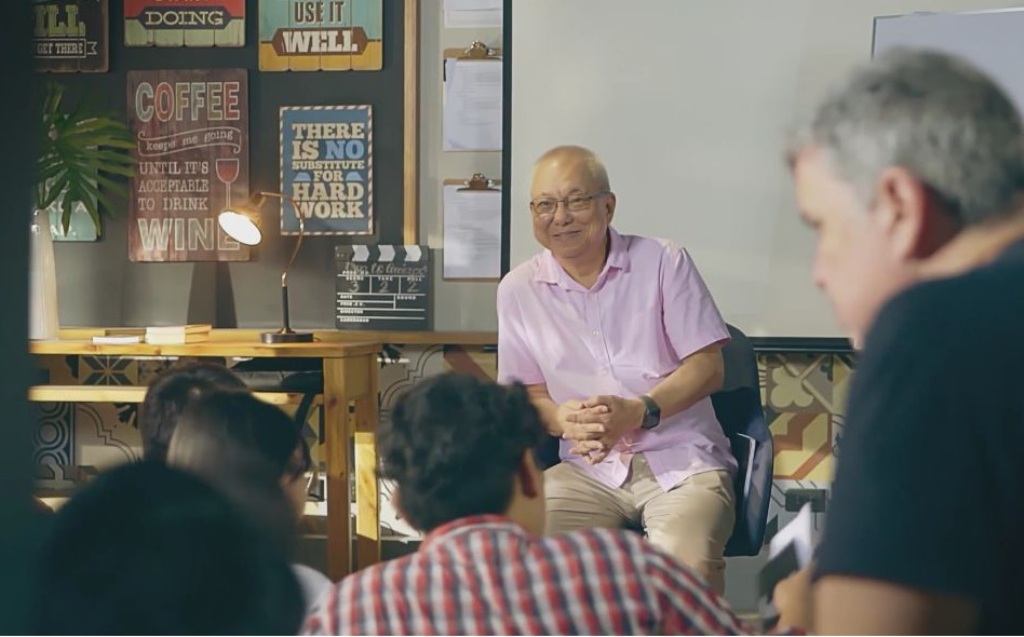Stuff to do (10/23/20)
Biobalance Webinar
On Oct. 24, 9 a.m., the Biobalance Wellness Institute will hold a webinar called “Trust Your Gut: What Symptoms Reveal About Your Health.” The webinar, hosted by Dr. Eca Lorenzo, is aimed at teaching people about the symptoms and risk factors that can damage their gut health and overall health, and what can be done to restore and maintain a healthy gut. The webinar is free and will be broadcast live via BioBalance Wellness Institute’s Facebook page.
Philippine Philharmonic Orchestra concert series
 The Philippine Philharmonic Orchestra (PPO) will be bringing classical music online on Oct. 30, 8 p.m., as part of its PPO Chamber Music concert series. Maestro Yoshikazu Fukumura, the PPO’s music director and principal conductor, has programmed a chamber concert series that highlights the different instruments of the orchestra while performing music composed for small ensembles. The October concert will focus on string instruments, while a Nov. 27 concert will focus on wind instruments. The concerts will be streamed on the CCP and PPO Facebook pages.
The Philippine Philharmonic Orchestra (PPO) will be bringing classical music online on Oct. 30, 8 p.m., as part of its PPO Chamber Music concert series. Maestro Yoshikazu Fukumura, the PPO’s music director and principal conductor, has programmed a chamber concert series that highlights the different instruments of the orchestra while performing music composed for small ensembles. The October concert will focus on string instruments, while a Nov. 27 concert will focus on wind instruments. The concerts will be streamed on the CCP and PPO Facebook pages.
Fitness Dance-athon
Avon Philippines continues its efforts to raise funds for the Philippine Cancer Society for Breast Cancer Awareness Month with a Dance-athon featuring dance group The Manoeuvers on Oct. 24, 6 p.m., at the Avon Philippines Facebook page. The session will last for two hours.
KulturaSerye Webinar at Gateway Gallery
Gateway Gallery presents the fourth installment of the #KulturaSerye webinars on Oct. 24, 2 p.m., via its Facebook page. Entitled “Philippine History: Beyond the Classroom and Textbook,” the talk will be delivered by Ian Christopher Alfonso who will emphasize how history can be taught beyond the classroom and will present the various avenues by which Philippine history can be taught effectively. To view the webinar, like or follow Gateway Gallery Facebook page and ensure bell notification is set to on for online events. This is a free webinar and no pre-registration is needed. Viewers are encouraged to join the discussion and share the live webinar so that more people will benefit from the talk. To know more about #KulturaSerye and the webinar, message the Gateway Gallery social media accounts — Facebook (GatewayGalleryPh), Instagram (gateway.gallery), Twitter (gateway_gallery), and You Tube (Gateway Gallery) — e-mail at gatewaygallery@aranetagroup.com, or call 8588-4000 local 8300.
Best of Spanish contemporary dance
Instituto Cervantes de Manila presents from Oct. 26 to 31, a selection from FIVER, an international festival of audiovisual dance support, exhibition and production created in Spain in 2012, for free on its Vimeo channel, https://vimeo.com/showcase/fiver. Curated by Samuel Retortillo, director of the FIVER festival, the selection is a current vision of audiovisual dance, based on five works that Fiver produced or have been finalists in their international competition. This program is expanded with a series of videos that were created during confinement called: “Confined Bodies.” For further information please log on to Instituto Cervantes’ website (http://manila.cervantes.es), or Instituto Cervantes Facebook page www.facebook.com/InstitutoCervantesManila.
HABI Fair goes online
 The Likhang HABI Market Fair — a showcase of handwoven items for the home and self using local fabrics, fibers, and textiles — is going online this week, from Oct. 21-27, via the website www.shophabifair.com. Over 30 merchants have joined this year, with their products sourced from and made in all corners of the country. For more information on Likhang HABI Online Market Fair, the series of webinars, and other HABI advocacies, visit www.habitextilecouncil.ph or follow www.facebook.com/HabiThePhilTextileCouncil and Instagram @habifair.
The Likhang HABI Market Fair — a showcase of handwoven items for the home and self using local fabrics, fibers, and textiles — is going online this week, from Oct. 21-27, via the website www.shophabifair.com. Over 30 merchants have joined this year, with their products sourced from and made in all corners of the country. For more information on Likhang HABI Online Market Fair, the series of webinars, and other HABI advocacies, visit www.habitextilecouncil.ph or follow www.facebook.com/HabiThePhilTextileCouncil and Instagram @habifair.
BaiCon held this weekend
The CICP (Creator and Influencer Council of the Philippines) is holding its second BaiCon on Oct. 23-24, the largest gathering of creators and influencers in the Philippines, with this year’s theme being “BaiCon InFest 2020 The Space Invasion.” It will be attended by over 50 influencers and creators including Mikey Bustos, Erwan Heussaff, Inka Magnaye, Bogart the Explorer, and many more. It will also feature VisMin creators and influencers. To join BaiCon, register via www.baicon.ph or follow BaiCon InFest 2020 The Space Invasion’s Facebook, Instagram, and TikTok @baicon.ph.
Podcast on Joey Ayala
 THE FILIPINAS Heritage Library and the OPM Archive will release MUNI-MUNI STORIES: A Podcast on Filipino Music Episode 3: Joey Ayala | Karaniwang Tao on Oct. 23, 6 p.m., on Spotify and Apple Podcasts. In this episode, the podcast host talks with Joey Ayala about his beginnings, the importance of music spaces, his song-writing process, and the need to tell stories through writing. For updates regarding the episode upload schedules, visit Filipinas Heritage Library and the OPM Archive on Facebook.
THE FILIPINAS Heritage Library and the OPM Archive will release MUNI-MUNI STORIES: A Podcast on Filipino Music Episode 3: Joey Ayala | Karaniwang Tao on Oct. 23, 6 p.m., on Spotify and Apple Podcasts. In this episode, the podcast host talks with Joey Ayala about his beginnings, the importance of music spaces, his song-writing process, and the need to tell stories through writing. For updates regarding the episode upload schedules, visit Filipinas Heritage Library and the OPM Archive on Facebook.
Mitch & Mel Online ‘Ohayo’
Comedian Mitch Valdez and musical director Mel Villena star in a half hour of stories and music delivered into your homes via Zoom on Oct. 24, 6 p.m. (Philippine time) and 7 p.m. (UTC-7). “Ohayo” is the title of the first episode with Valdez sharing stories of growing up in Japan and the culture shock of re-entry to life in the Philippines. This is the first of many episodes providing an antidote for our times. Get access (P600 advanced, P750 on the day of the show) via TicketWorld.
Animation Film Festival online
FOR the 10th year in a row, the Institut Français, in partnership with the AFCA (Association Française du Cinéma d’Animation), is bringing the Fête du cinéma de l’animation (Animation Film Festival) to an international audience. From Oct. 14 to 31, two animated feature films and 11 French and African animated short films will be available online and for free. The films can be seen here; https://ifcinema.institutfrancais.com/fr/streaming/animation . All the films are in French with English subtitles.
Glass Art Workshop
The BGC (Bonifacio Global City) Arts Center will be holding a glass art workshop with artist Fchel Estanislao of Glassicology on Oct. 24, 10 a.m. to noon. The session will be about turning glass into wood art. The session is recommended for children aged 7 and up. Donations are needed to access the workshops which will be conducted via Zoom. The center requests a minimum donation of P500. For more information and how to register, visit https://www.bgcartscenter.org/whats-on/219/online-yana-workshops.
Film screening on mental health
 THE CULTURAL Center of the Philippines (CCP) and the Quisumbing-Escandor Film Festival for Health partner to bring awareness to mental health and health-related issues in the country through Balik Tanaw, a free film online screening. From Oct. 23 to 30, films on autism spectrum disorder, depression, and dementia will be screened on the CCP Vimeo channel for free. The featured films — Oh, Aking Katoto by Kelvin Aguilar, Rekuwerdo by Kristoffer Brugada, and Wish by Sheen Irerick Seekts — were part of the 3rd Quisumbing-Escandor Film Festival. There will also be a live talkback and Q&A with the film directors, to be moderated by actress Meryll Soriano, on Oct. 30. Catch it on the CCP Media Arts and CCP Facebook pages.
THE CULTURAL Center of the Philippines (CCP) and the Quisumbing-Escandor Film Festival for Health partner to bring awareness to mental health and health-related issues in the country through Balik Tanaw, a free film online screening. From Oct. 23 to 30, films on autism spectrum disorder, depression, and dementia will be screened on the CCP Vimeo channel for free. The featured films — Oh, Aking Katoto by Kelvin Aguilar, Rekuwerdo by Kristoffer Brugada, and Wish by Sheen Irerick Seekts — were part of the 3rd Quisumbing-Escandor Film Festival. There will also be a live talkback and Q&A with the film directors, to be moderated by actress Meryll Soriano, on Oct. 30. Catch it on the CCP Media Arts and CCP Facebook pages.
Museum conference
THE METROPOLITAN Museum of Manila and the National Commission for Culture and the Arts (NCCA), in collaboration with the Alliance of Greater Metro Manila Museums and with the support of De La Salle University Publishing House, invite museum professionals to participate in the exchange of ideas on the issues, challenges, and opportunities concerning the museum community. A Call to Transform: Manila Museums Summit 2020 — which will be held from Oct. 27 to 30, 9 a.m. to noon — envisions to cultivate a critical understanding of the directions museums are moving towards and the strategies implemented by different institutions in adapting to these precarious times. The summit will be hosted via Zoom with livestreaming on Facebook. Click “going” on the Facebook event page (https://web.facebook.com/events/1493740850824053 ) to be notified once it goes live.
Freestyle, Robert Seña to headline free online concert
 POP and R&B band Freestyle and indie alternative band She’s Only Sixteen’s frontman and rhythm guitarist Robert Seña will headline the nostalgia-themed UNITE 2020, an online concert that is free and open to the public. It will showcase performances by homegrown talents and indie musical acts Kyla and Jam, The Strays, Why July, Nobody’s Home, Tala and Matt Murillo. The affair will feature numbers from the internationally acclaimed Saint Benilde Romançon Dance Company and hit mixes by DJ Mohit and DJ Rammy. UNITE 2020 will go live on Oct. 30, 6 p.m., on the official Facebook page of the Benildean Student Trainers at: https://www.facebook.com/StudentTrainers/.
POP and R&B band Freestyle and indie alternative band She’s Only Sixteen’s frontman and rhythm guitarist Robert Seña will headline the nostalgia-themed UNITE 2020, an online concert that is free and open to the public. It will showcase performances by homegrown talents and indie musical acts Kyla and Jam, The Strays, Why July, Nobody’s Home, Tala and Matt Murillo. The affair will feature numbers from the internationally acclaimed Saint Benilde Romançon Dance Company and hit mixes by DJ Mohit and DJ Rammy. UNITE 2020 will go live on Oct. 30, 6 p.m., on the official Facebook page of the Benildean Student Trainers at: https://www.facebook.com/StudentTrainers/.
Rush Hour Concerts: The Best of OPM with MSO
IN the midst of the pandemic, the Manila Symphony Orchestra (MSO) continues with its popular Rush Hour series of concerts, this time online. On Oct. 30, 6-7 p.m., via Zoom, the MSO will perform symphonic renditions of the Best of OPM (Original Pilipino Music) from the 1970s to the 1990s, from the hits of Ryan Cayabyab up to the Eraserheads. Proceeds from the online event will support Ayala Foundation’s student scholars online access allowance for one school year. Get access (regular tickets are P1,200, while discounted tickets for seniors, PWD, and students is P850) via TicketWorld.

 “They already want to break out and create screenplays and direct. There’s a certain impatience that I try my best to understand. And you can see it in their scripts, there’s a kind of rush and a rhythm of urgency,” he explained.
“They already want to break out and create screenplays and direct. There’s a certain impatience that I try my best to understand. And you can see it in their scripts, there’s a kind of rush and a rhythm of urgency,” he explained. LOS ANGELES — Daphne du Maurier’s beloved novel Rebecca has seen multiple screen adaptations but the director of the latest film version believes his may be the closest to the 1938 book.
LOS ANGELES — Daphne du Maurier’s beloved novel Rebecca has seen multiple screen adaptations but the director of the latest film version believes his may be the closest to the 1938 book.
